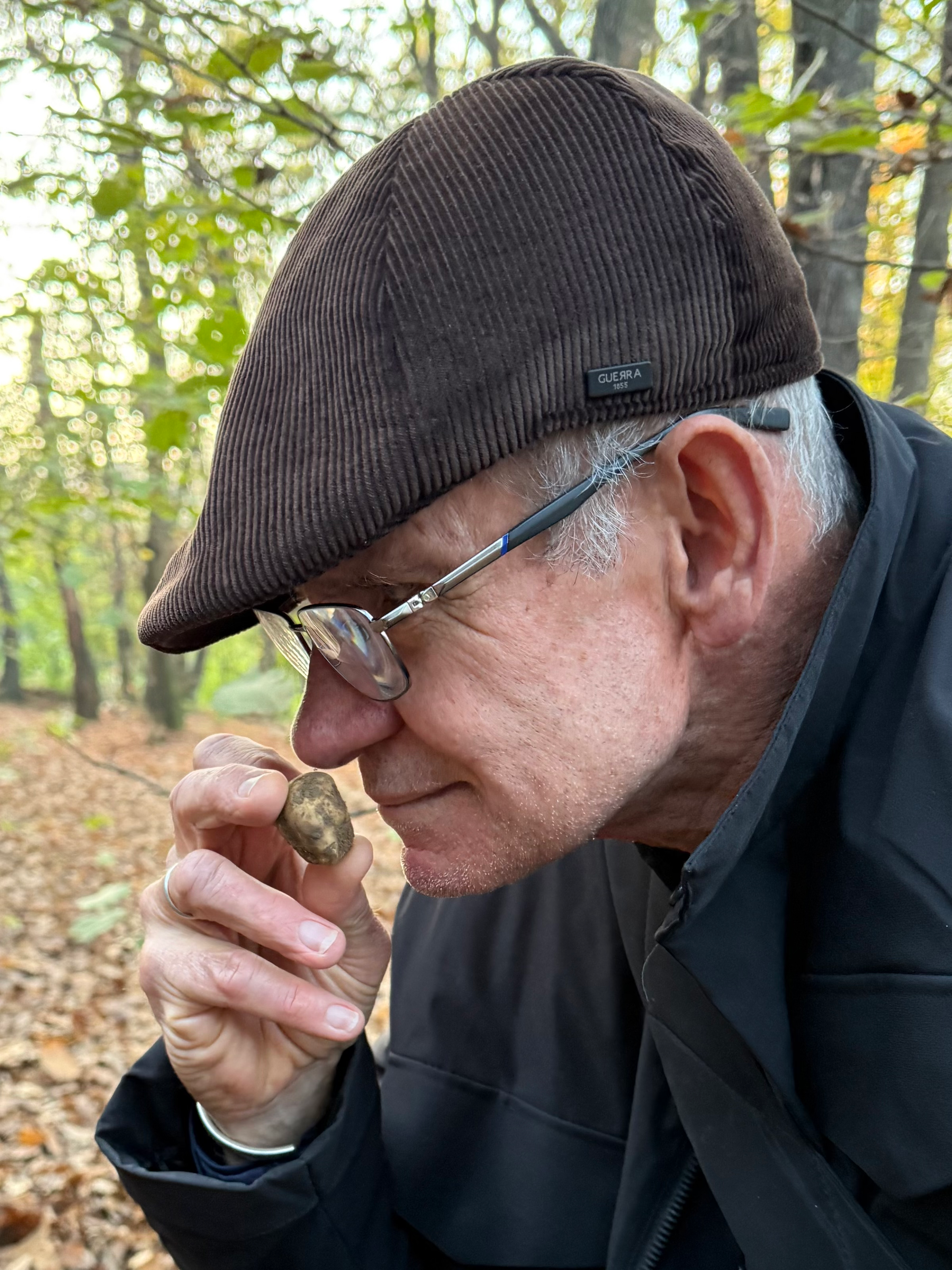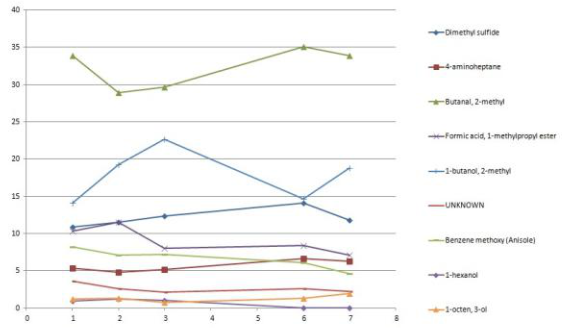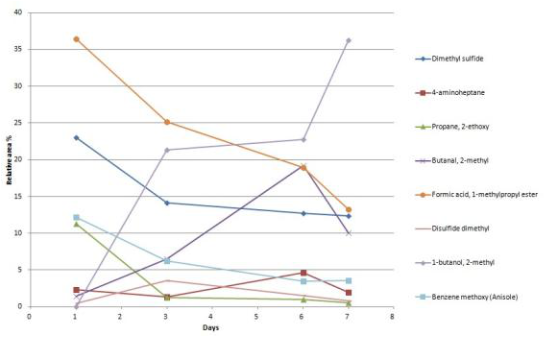Updating our experiment on separating truffles from different trees.
- Carmine Di Campli

- Jul 11, 2024
- 4 min read
In this post, we revisit the experiment we began last year to see how it has progressed. We offer a brief overview of the experiment, an update on customer reactions at our market stall, and feedback from the conversations sparked by their experiences. Additionally, we share our informal findings on the Australian Black Winter truffle aroma wheel thus far and introduce new pages on our site with more detailed information about the experiment. Let's dive in!
Truffle aroma: Updating our experiment of separating truffles from different trees.
Truffle from different trees, is there a difference? A brief experiment update.
For our regular readers, you may recall that last year we began an experiment to sell truffles based on the different trees under which they grew. This experiment was inspired by Dr. Gary Lee’s work, which found that truffles from different trees have distinct compounds. When we asked Dr. Lee about his findings, he responded, “Well, from the findings, theoretically you would have to say that trees and many other factors like soil and micro-environment most certainly impact aroma profiles, but we cannot say definitively as there has not been any specific scientific work on the impact on aroma by trees.” This typically cautious scientific response from a chemist certainly got us thinking. Why don’t we actually separate them out and see what happens? Better yet, why don’t we bring them to market so people can experience the differences themselves?
The experiment in season 2023
Last year, we wrote two posts about our experiment, which you can find [here] and [here]. These posts are well worth a read for a deep dive into the rationale and some of the findings from our experiment. In brief, our results seem to confirm Dr. Lee’s compound analysis via gas spectrometry: truffles from under French Oak tend to have a flavor profile typical of that tree, as do truffles from under our English Oak and Hazelnut trees. Fascinating, isn’t it?
The chart above relates to truffle grown under hazelnut trees and the one under is for truffle from under oak trees.
Our experiment involved collecting the truffles at the end of the hunt, placing them into different containers, and presenting them at our Orange Grove Markets under three different cloches. Everyone who took a sniff noticed a difference and expressed a preference for one of the cloches.
Based on our aroma sampling and our conversations with you, we plotted the aromas most commonly noticed for each truffle type using the Australian Winter Truffle Aroma Wheel created by Dr. Gary Lee. See below.
The experiment continues in season 2024
Given the interest our experiment generated and how it got people thinking about their use of truffles, we naturally decided to continue separating out our truffles from different trees this season.
At our first markets, conversations tended to go one of two ways. New customers initially expressed disbelief, then excitement as they discovered a new appreciation for tree-influenced truffle aromas. More importantly, many walked away with a newfound curiosity to explore what this all meant. Our faithful truffle aficionados approached this year’s selection differently, eager to try something new. Many bought one of each type, leading to deep discussions about how they would conduct their own experiments. Some conversations were very animated, and I have to admit, at least for me, there was considerable salivation at the thought of the delicious concoctions being planned.
Our Thoughts and Caveats
First the caveats, we've never claimed our experiment has scientific rigor. We encountered some inherent challenges that could mix up the aromas a bit. For instance, what do we do with truffles found right between two trees? Well, since we're a farm and want to sell all the truffles we dig up, we make an educated guess about which tree the truffle came from. In a strict scientific experiment, we would probably discard those truffles.
And what about when the roots of one tree extend into another tree’s root zone? Honestly, we can never be entirely sure where a truffle is getting its nutrients. We assume that if it's closer to a tree, it's likely attached to that tree's roots. Generally, this assumption works, but we have to admit there are times when it might not be accurate.
Out thoughts, well let’s first revisit Dr. Lee’s comments on our pod cast further. He noted that all truffles contain the same compounds, just in different concentrations. He also mentioned that the five or so most common compounds predominate in all truffles, but again, their concentrations vary (likely due to local conditions). The question is, if local conditions like the type of tree impact flavor and aroma profiles, what exactly are these aroma differences? Our experiment is exploring this. And the other experiment—what is the impact on food ingredients?—is the one we’re all working on when we take our truffles home.
Lastly, don't forget the first rule of truffle aromas (yes, we're planning a post on truffle principles): each truffle has its own unique aroma. Secondly, their aroma is shaped by their original microenvironment, including the tree where they grew. However, while we think we've noticed a trend influenced by the tree, there are times when those specific characteristics might not be as clear. In those cases, we suspect that other factors like soil, moisture, and air temperature could be playing a bigger role in shaping that particular truffle's aroma.
I hope you found the above information intriguing. Our experiment has certainly sparked curiosity about how people use their truffles. And that has to be a good thing right? It has led to thought-provoking questions such as: What is the connection between aroma and performance on the plate? How do you pair different truffles with various foods? One of the best questions that came up at the stall was about the universal consensus that truffles pair well with eggs. If truffles vary so much in aroma, how is it possible that this heavenly pairing remains unaffected? Isn't that a truffle paradox? The amazing complexity of truffles. What a journey.
We think we have the answer but what do you think? Drop us a note in the comments section below, we would love to hear your thoughts. And that is it for now, a post on our truffle tree experiment. I hope you liked it. If you did, drop us a like. If you think a friend may like it, by all means please feel free to share it.
Until next week, ciao truffle lovers.
Carmine












We definitely appreciated the differences in the truffles from different trees when we were able to not only smell them side by side but taste them on the same plate of food. We got three truffles from Fish River Truffles, one from under a French oak, one from under an English oak, and one from under a Hazelnut. I'd strongly encourage anyone interested in exploring the topic to get two or three truffles and play around to see what works for you. It's a game changer experience!
@Carmine Di Campli do you think the time in season changes the trees influence on the arome of the truffle. That is, do truffles from under a French change over the season? …